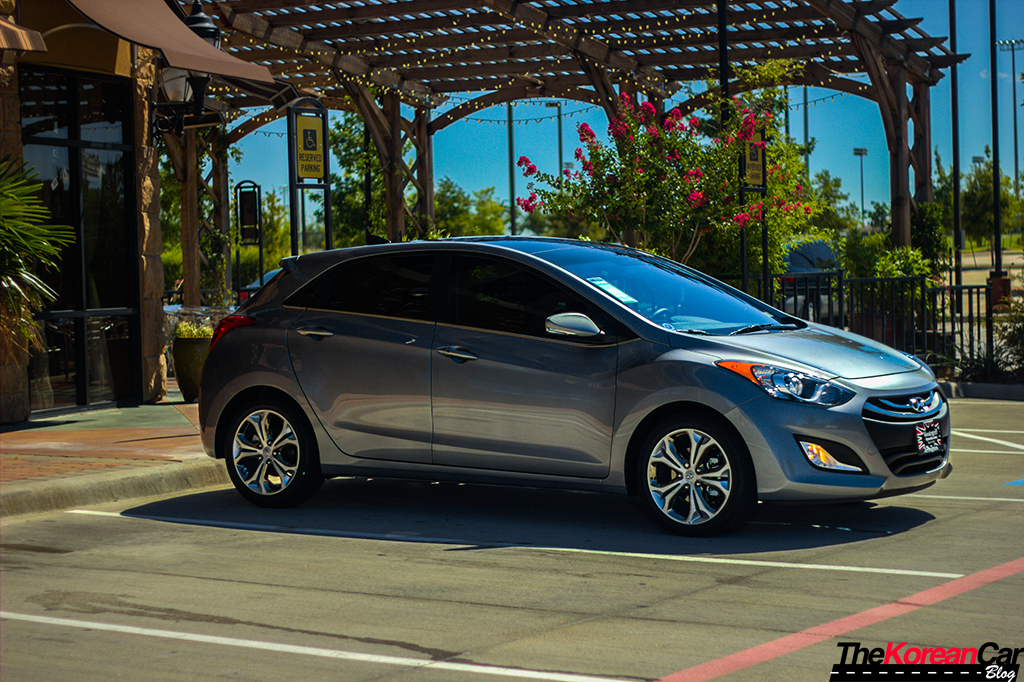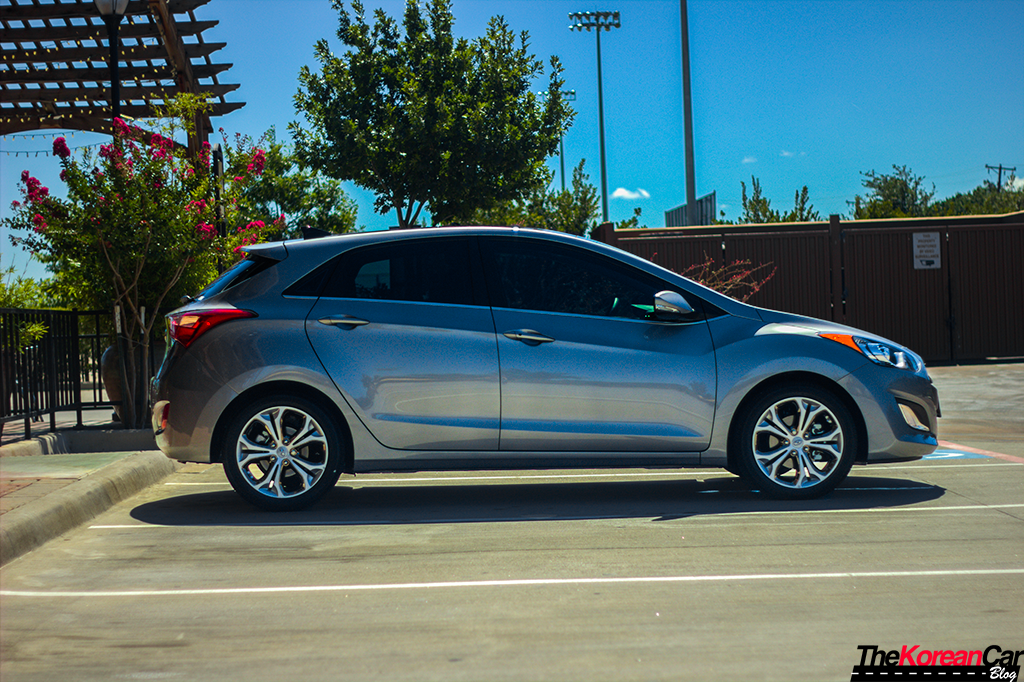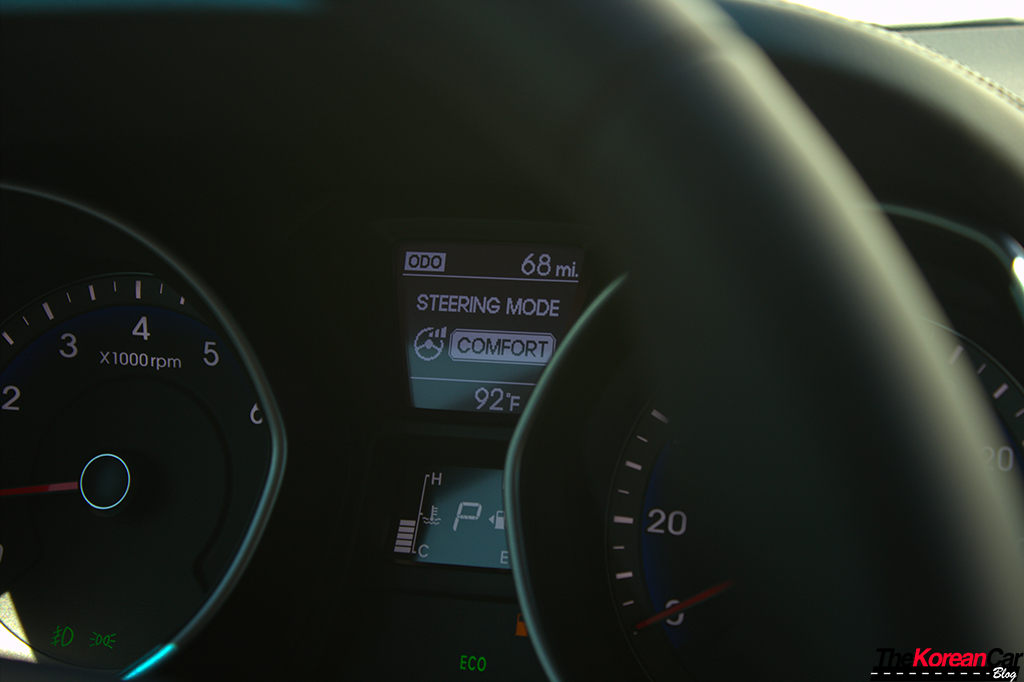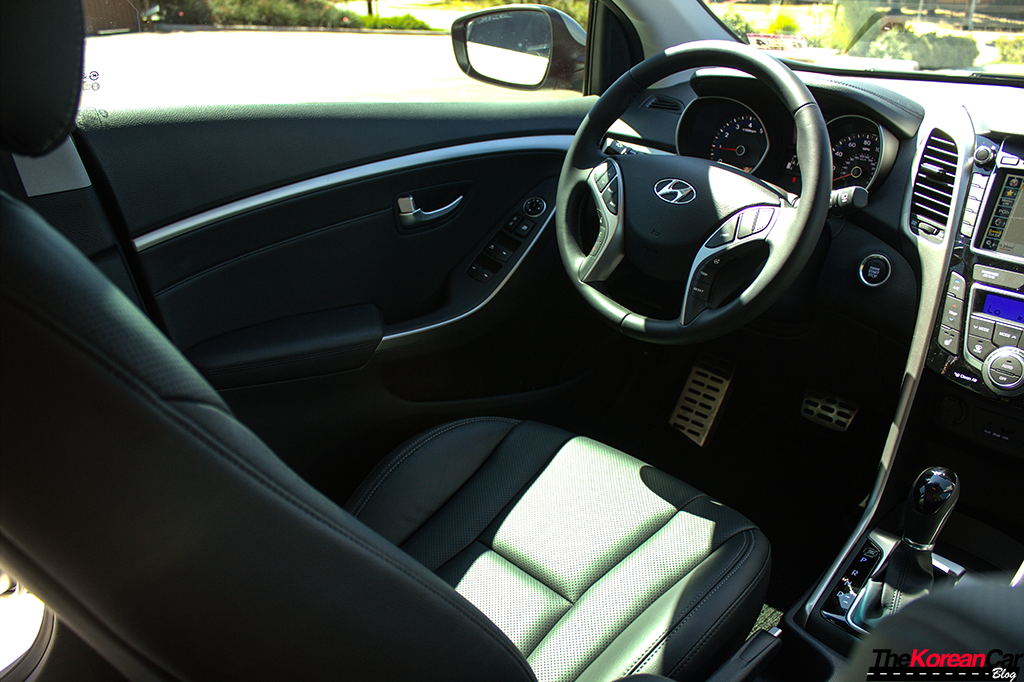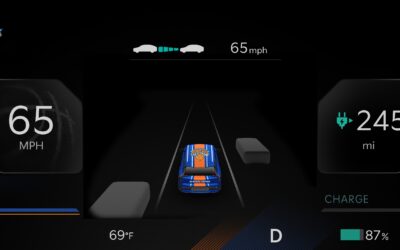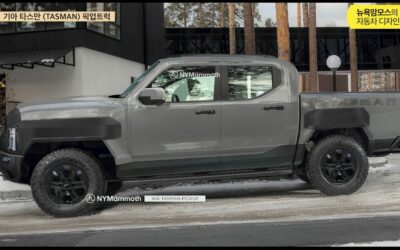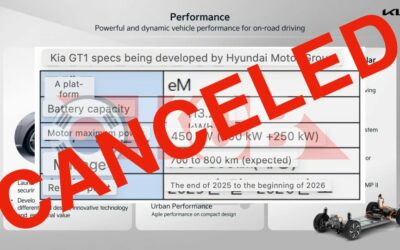The first generation of the Hyundai i30 not only was a other hatchback for the Hyundai Motor Company in Europe, it was more. Originally launched in 2007, the first generation of the Hyundai i30 – company’s first car launched with the ‘i’ prefix, introducing a new nomenclature and heralding a new era for Hyundai in Europe – has gone through two facelifts before arriving in its all-new form here on the Frankfurt Motor Show stage.
[ads id=”0″ style=”float:left;padding:5px;”]In the US-market, Hyundai introduces the Elantra Touring, a first generation european Hyundai i30 Station Wagon without much success. The completely redesigned C-segment hatchback features new look incluiding Hyundai’s Fluidic Sculpture. The Korean automaker expects the new-generation Elantra GT to complete the Elantra Sedan, a total Hyundai hit in the US. The modern design language shared by the rest of the family it’s offered in CW (available only in Europe).
The 2013 Elantra GT is available with the same 1.8 MPi with 148 hp works on the Elantra Sedan. The i30 its available with a choice between two petrol engines (1.4 MPi and 1.6 GDi with 100 and 140 hp) and three diesel CRDi engines (1.4 and two 1.6 with 90, 110 and 128 hp) combinated with a six speed manual gearbox (the most powerful engines may be associated with a 6-speed automatic gearbox also). Totally different between the markets.
Hyundai unveiled its new generation Elantra GT at the 2012 Chicago Motor Show. The new Elantra GT/i30 was designed and engineered between Hyundai’s most important Technical Centres, like European Centre in Rüsselsheim, Germany, North American Centre in California or South Korea Namyang R&D Centre. It was launched in South Korea since October 20, 2011 and it is the second model under Hyundai’s “Premium Youth Lab” brand. The new Korean-spec i30 is offered with a 1.6 “Gamma” GDi engine and a 1.6 VGT diesel engine.
Adding the GT to the lineup puts Hyundai in the unusual position of having more variants of their compact vehicle than any other brand in the USA, and that’s even if you don’t count the Veloster as an Elantra. Part of this is to give customers options the other brands don’t, but it is also to extend the life of the aging Elantra. In 2010 when the Elantra debuts on the scene it was new and exciting, but this is a fiercely competitive segment. In the past three years, the Civic, Forte, Golf and Mazda3 have all been redesigned bringing new and exciting shapes to choose from.
Like its single-trim lineup, Hyundai continues to keep things easy under the hood of the entire Elantra lineup with a 1.8-liter four-cylinder MPi producing 148 horsepower and 131 pound-feet of torque as the sole engine. The only powertrain option you get with the Elantra GT is your choice of transmission: either a six-speed automatic or manual. Our car came with the automatic, which turned out to be one of its biggest downfalls, as it offered sluggish shifts that never felt comfortably quick enough while driving around town. It’s possible that the transmission has just been programmed to maximize fuel efficiency, which, even after the well-publicized reduction in fuel economy last year, still returns a decent 27 miles per gallon in the city and 37 mpg on the highway. Fortunately, since the Elantra GT only comes in a single trim level with available options, buyers can get the manual transmission even on a fully loaded model.
Park the GT next to an Elantra sedan and you’ll notice this isn’t a sedan with a hatch glued on. Instead, the GT rides on a 2-inch shorter wheelbase shared with the Veloster. Along with the reduced wheelbase, Hyundai sliced nearly 9-inches off this sausage slotting the GT between the Veloster and Elantra sedan in overall size. The shorter dimensions made parking the GT easy in tight urban settings even though the GT retains the Elantra’s 34.8-foot turning circle.
In spite of the automatic transmission, the Elantra GT can be fun to drive for what it is thanks to its surprisingly good power-to-weight ratio. Hyundai says that the optional Style Package adds a sport-tuned suspension, but we credit most of this hatchback’s driving enjoyment to its relatively low curb weight. Hyundai says that the Elantra GT with the automatic transmission ranges from 2,784 pounds up to 2,959 pounds without being specific, but our tester’s panoramic sunroof, bigger wheels and fully loaded interior technology would likely peg it at the top end of the scale. Looking at the spec sheet, the GT only packs about an extra 100 pounds over the sedan, yet it’s still about 200 pounds lighter than the Mazda3, which is probably the sportiest budget hatch on the market.
Now, the Elantra GT isn’t going to make you the king of the autocross, but it doesn’t feel like an unenthusiastic, top-heavy economy car either, at least with Active Eco not selected. The Active Eco driving mode considerably numbs the throttle to optimize efficiency, but it obviously does so at the expense of responsiveness. A word of advice here: If you’re about to pass a car, be sure this button is in the “OFF” position unless you like playing chicken with oncoming traffic, as downshifts come in much later than expected. During our First Drive of this car, we noted that the engine felt “gutless” going up hills at low engine speeds, but our time with the GT for this review was on the flat roads of Northeast Florida and the engine managed just fine in these conditions.
The GT’s interior appointments and trim are similar to the sedan’s, which is to say attractive and of high quality. As with other current Hyundais, there’s a pile of standard equipment baked into the $19,170 base price. Examples: heated mirrors and front seats, remote keyless entry, air conditioning that also cools the glove box, cruise control, driver-selectable steering modes, Hyundai’s Blue Link telematics, satellite radio, fog lights, a USB port and aux input, a six-speed manual, and 16-inch aluminum wheels.
There are two option groups—the performance-oriented Style package ($2750) and the Tech package ($2350). The former was fitted to our test car and adds 17-inch aluminum wheels, slightly firmer suspension tuning, the double sunroof, leather seats, a leather-wrapped steering wheel, a power driver’s seat, aluminum pedal cladding, and auto up-and-down control for the driver’s window. The Tech gear includes a nav system, a rearview camera (the lens lurks behind the logo in the middle of the rear hatch), auto headlights, dual-zone auto climate control, and proximity-key entry and start.
Another technology that plagues the Elantra GT is the Driver Selectable Steering Mode or Flex Steer, which we’ve harped on in reviews of other Hyundais before. This feature, which is quickly spreading through the Hyundai and Kia ranks, uses a button on the steering wheel that allows drivers to instantly change the weight of the steering system using Sport, Normal and Comfort modes. During our week with the car, we found that the Sport mode actually made the car easier to drive in highway driving, while Normal was better suited for driving around the city; we never figured out a time where you would purposefully want the overly assisted and sluggish response of Comfort mode.
The subtle differences between the Elantra and the i30-based GT hatchback continue inside the car where the sedan’s Coke-bottle-shaped center stack gets a flatter, more conservative look. Overall, Hyundai is pretty consistent with the interiors of its current lineup, Gloss black details and brushed silver inserts add a touch of class that shifts the i30 ever closer to the kind of interiors we expect from the VW Golf. And the driving experience is almost on a par, too. Front passengers get lots of head and shoulder room, and those in the rear are unlikely to complain about the amount of head- and kneeroom. The boot has a reasonably low lip and offers 378 litres of capacity; that’s more than either the VW Golf or Ford Focus. With the rear seats folded flat (and the seat cushions themselves folded forwards), that volume increases to an equally impressive 1316 litres.
This GT it’s a 2013 Model Year, but the technology on it is a few years old. Base trim include the standard 6-speaker audio system is one of the best standard audio systems in this segment. With 170 watt, the system comes with standard AM/FM/SiriusXM radio/ CD/MP3 player, Bluetooth and USB/iPod integration. Sadly you won’t find SYNC-like voice command of your tunes or Pandora streaming, but the system has a natural sound and is easy to use. Also includes Hyundai’s Blue Link telematics system.
High-rollers won’t be able to live without a touchscreen nav unit, but I was disappointed to find the GT doesn’t get the new 8-inch Blue Link system from the Santa Fe that we test drive recently and will publish soon. The we find the 7-inch “last generation” system found in the Elantra sedan. It’s not a bad system, but not include latest voice commands and smartphone integration ability available in other Hyundai products. FYI the new 2014 Kia Forte hatchback will be available with the latest Hyundai/Kia infotainment software with smartphone apps, 911 crash notification, vehicle diagnostics and full voice commands for your music library.
BASE EQUIPMENT
- ABS + EBD.
- ESP + TCS.
- 7 airbags including driver knee protection.
- Tire Pressure Monitoring System (TPMS).
- Rear LATCH child-seat-attachment system.
- Anti-theft system integrated with remote keyless entry, panic alert and trunk open.
- Front fog lights.
- Steering wheel.
- Air Conditioning.
- Folding rear seat.
- Trip Computer.
- Electric Front Windows.
- AM/FM/SiriusXM/CD/ audio system with USB-iPod connection.
- Adjustable steering wheel.
- Driver seat: individual type adjustable height.
- Painted front and rear bumpers.
- Body Coloured Door Handles.
- Electrically and Heat Adjustable Door Mirrors.
- 16″ inch Alloy Wheels.
- Painted exterior mirrors.
- Alarm.
- Central Locking.
- Steering wheel with tilt adjustement, telescopic adjustment and audio/trip controls..
- Spare tire Space Saver.
- Heated front seats.
- Power driver seat with power lumbar support.
- Automatic air conditioning with two climate control zone.
- Bluetooth.
- Hyundai BlueLink.
- Sliding center armrest.
- 60/40 split fold-down rear seatback.
- Front passenger seatback pocket.
- Cruise Control.
- Mirrors Turn Signal.
- Heated side mirrors
- Electric Rear Windows.
- Leather Steering Wheel.
- Reading lights.
- Glasses holder.
- Daytime running lights.
- Driver Selectable Steering Mode (DSSM) (provides three steering wheel modes).
Style Package: ($2750).
- 17-inch alloy wheels with P215/45R17 tires.
- Sport-tuned suspension.
- Panoramic sunroof.
- Side repeater exterior mirrors.
- Leather seating surfaces.
- Leather-wrapped steering wheel and shift knob.
- Power driver’s seat with power lumbar support.
- Aluminum pedals.
Tech Package: ($2350).
- Requires Style Package.
- Navigation system with 7-inch screen.
- Rearview camera.
- Dual automatic temperature control.
- Automatic headlamps.
- Proximity key entry with electronic push button start.
KEY FEATURES:
- Engine : I 4.
- Fuel : Petrol.
- Engine Alignment : Front Transverse.
- Drive : FWD.
- Displacement : 1797 cc.
- Type : 16-valve with D-CVVT.
- Compression Ratio : 10.3:1.
- Output : 148 hp @6500 rpm
- Torque : 131 lb/ft.
- Gearbox : 6-speed automatic transmission with SHIFTRONIC and Active ECO System.
- Wheelbase : 104.3 inch.
- Length : 169.3 inch.
- Width : 70.1 inch.
- Height : 57.9 inch.
- 17-inch alloy wheels with P215/45R17 tires.
- Curb Weight : 2784-2959 lbs.
- Front Suspension : McPherson struts. Coil springs.
- Rear Suspension : Coil springs.
- Top Speed : 182 km/h (113 Mph).
- 0 to 62 mph: 12.8 s.
- Fuel Consumption: 27 / 37 / 30 mpg.
- Fuel Tank : 13.2 gallons
Special Thanks to Vandergriff Hyundai.

